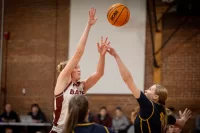On a beautiful September morning, 15 Bates students hike a quarter mile through the woods of Freeport, Maine, shovels in hand, before emerging into a sunlit clearing.
Spread before them is Pettengill Farm, a historic saltwater farm perched on an estuary of the Harraseeket River. Now owned by the Freeport Historical Society, the 140-acre property features a circa-1800 saltbox farmhouse plus fields, woods, apple trees, and a salt marsh.
It’s a stunning vista.
Guided by Holly Ewing, the Christian A. Johnson Professor of Interdisciplinary Studies, the students are part of “Soils,” an environmental studies course that digs into the science of dirt.
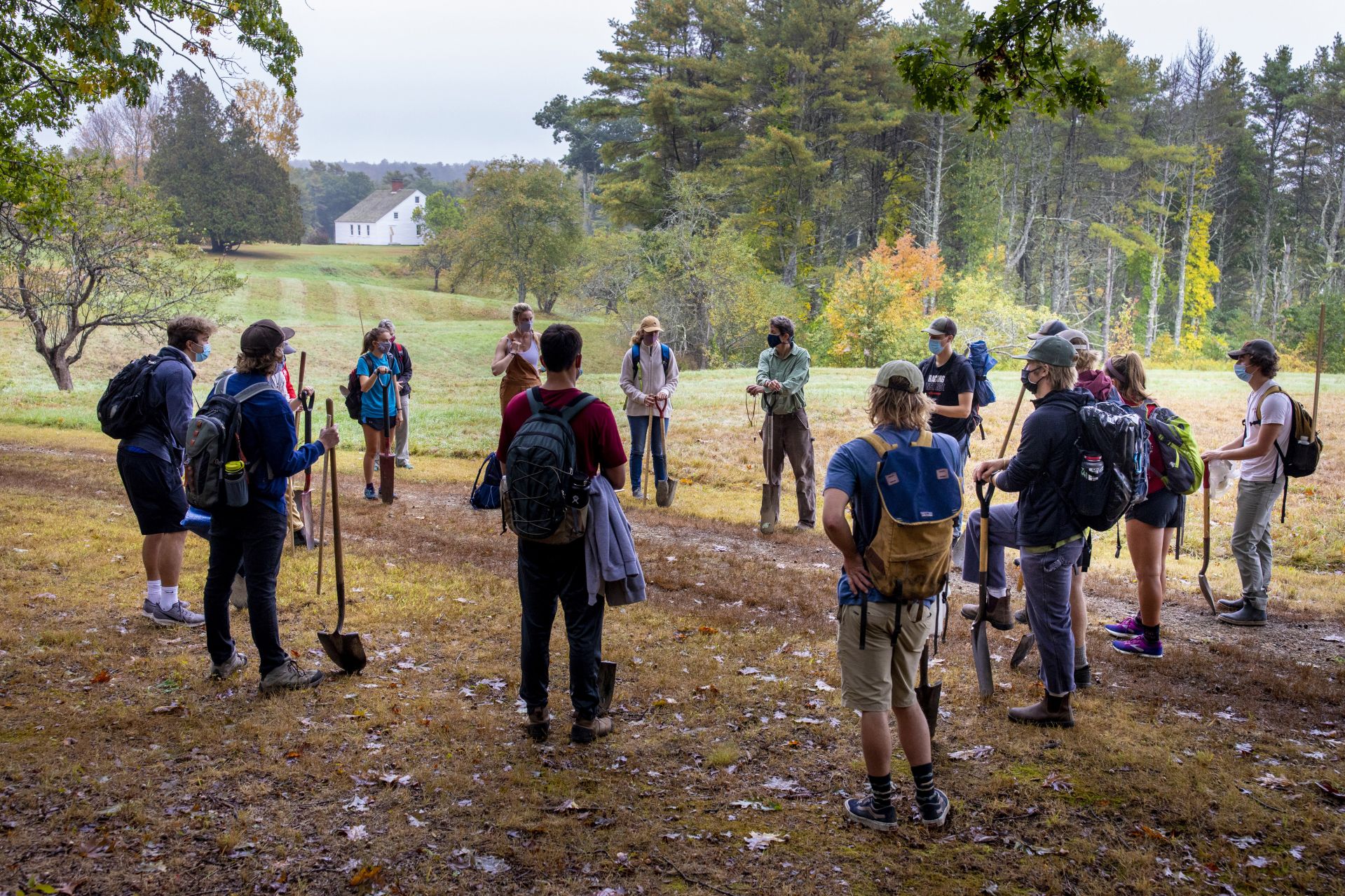
Farm Stand
This fall, faculty had the choice to offer their courses in person or remotely. For Ewing, “Soils” needed to be taught in person.
“The course absolutely relies on students being able to see, smell, and feel soils in a variety of landscapes,” she says. “These field explorations make the properties of the soil tactile and help the students come to see soils as bodies in the landscape.”
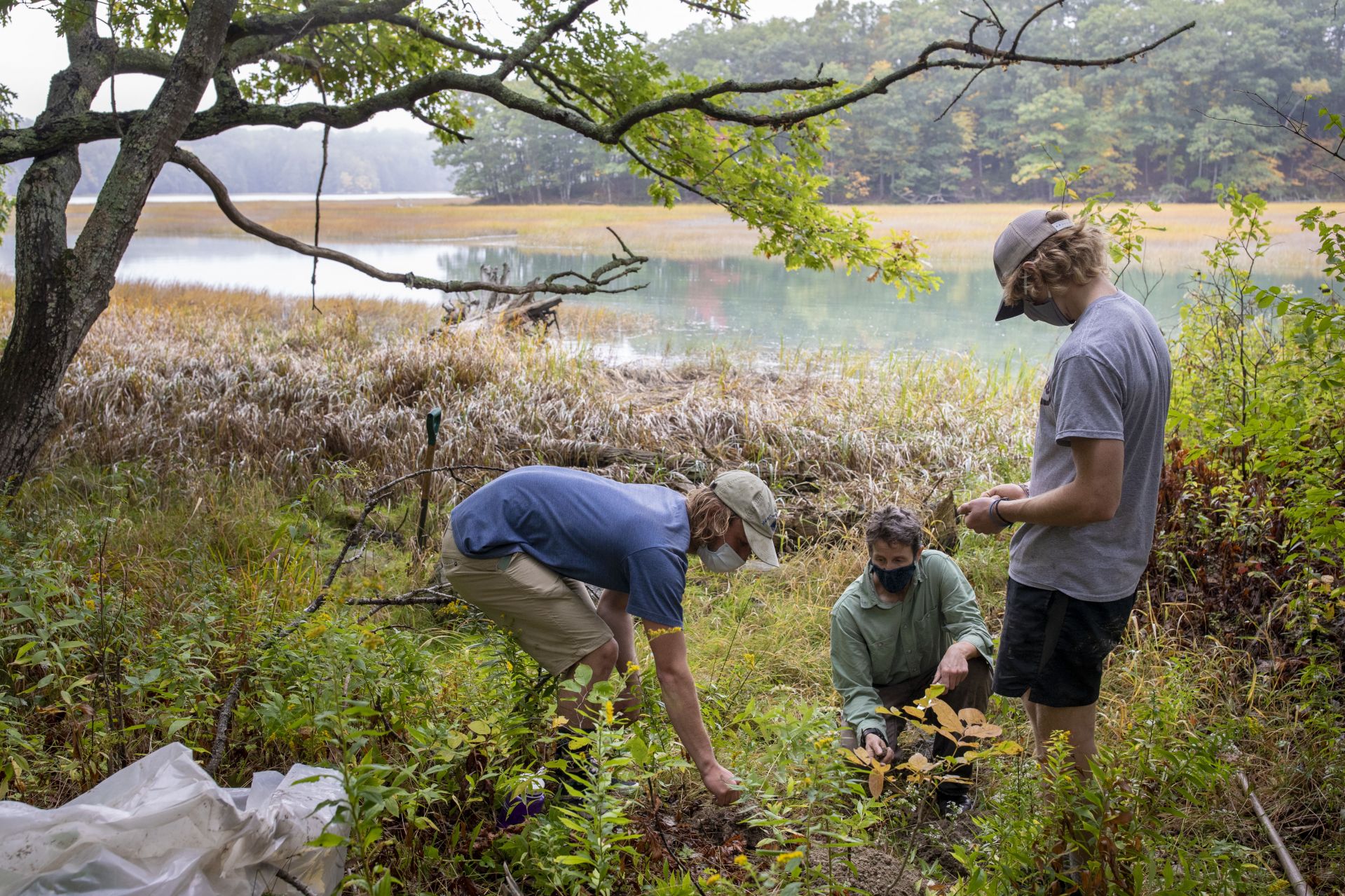
The characteristics of soils are shaped by a variety of factors, she explains, ranging from vegetation, slope, drainage, and the parent materials from which they form.
“The physical, chemical, and biological properties we discuss in the classroom can be connected to what we have seen and done in the field — something that can clarify and connect concepts in a way that no textbook can.”
Off to Dig
At Pettengill, the students explored transitions in soil characteristics on the landscape and compared what they found in the field to how the soils are mapped in the areas’s soil survey, which describes and classifies soil types and properties of soils.
Students looked closely at soil structure, texture, and color among the different soil “horizons” — parallel layers of soil that have different characteristics from those above and below — that they unearthed.
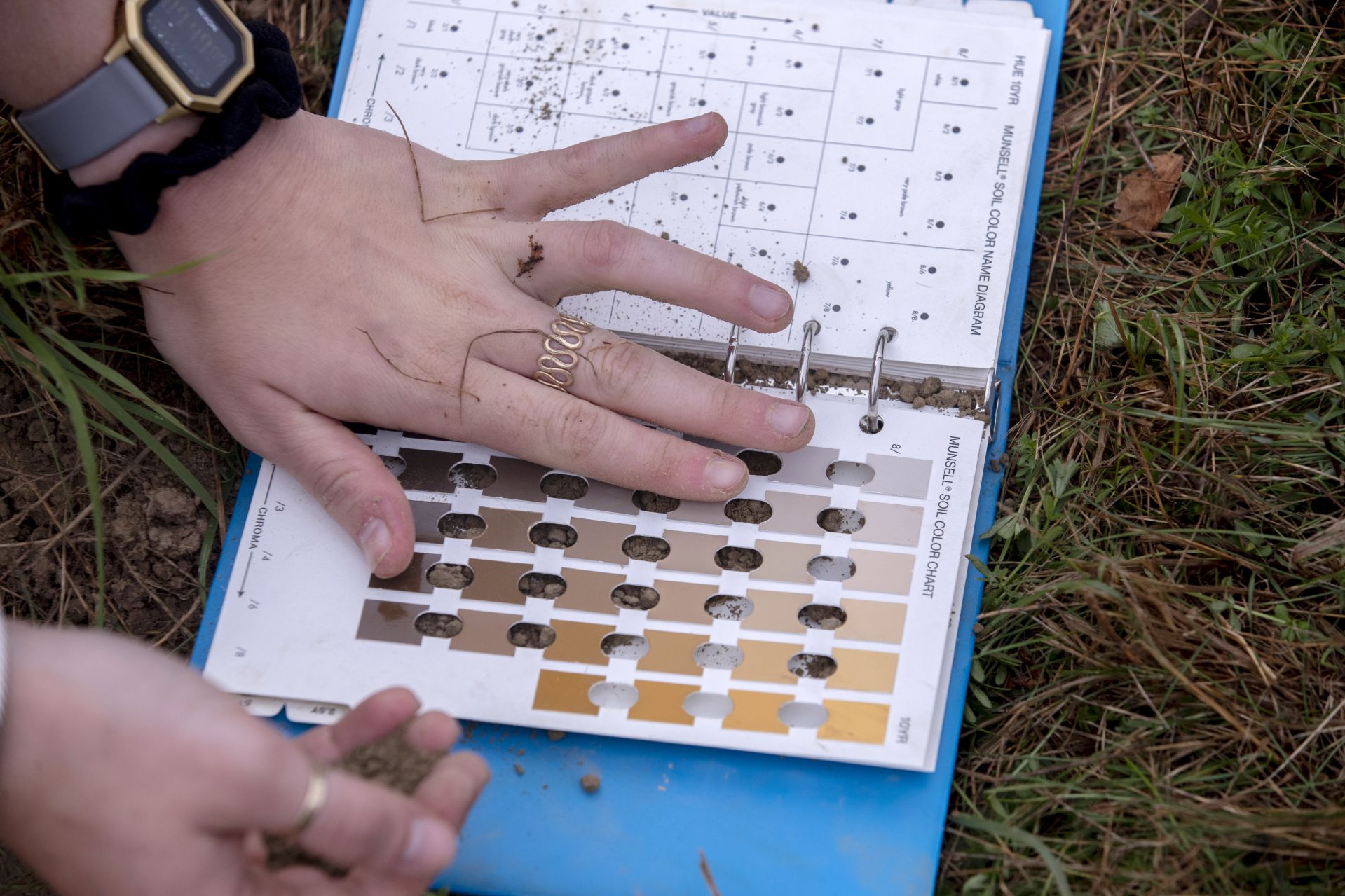
“The changes that can occur within just a few feet of each other are incredible,” says environmental studies major Sam Gilman ’22 of Mendham, N.J. He and his lab partner, Zoe Knauss ’23 of Buffalo, N.Y., dug about eight holes during the course of the morning.
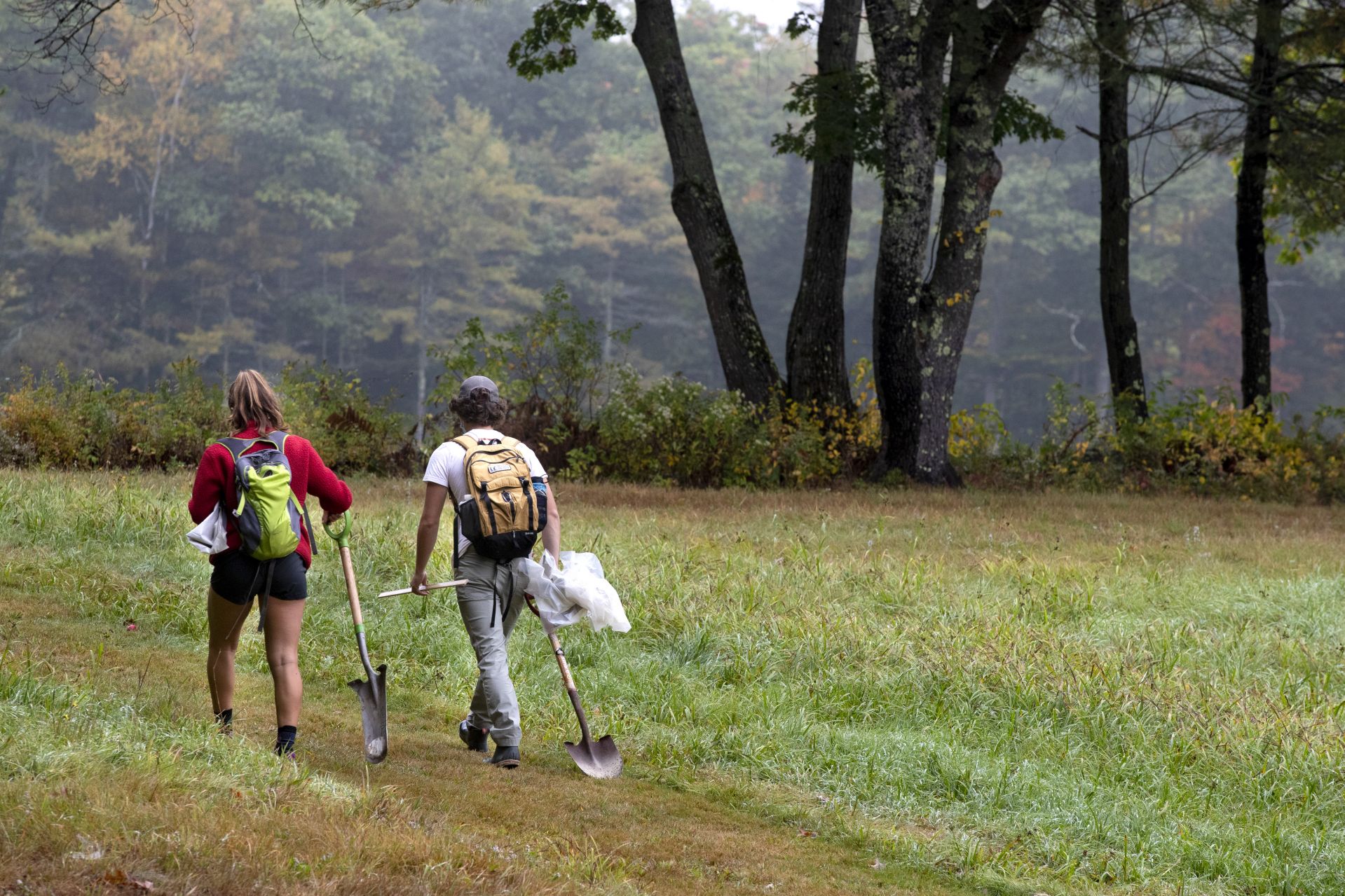
Ewing had prepared students (including one studying remotely in New Hampshire, who dug her own holes there) for their fieldwork by teaching them about differences in soils and what causes those differences, from redox reactions to erosion. “It’s really cool to then have the ability to get outside and actually see how what we’re learning in class applies to real landscapes,” Gilman says.
Fieldwork in Ewing’s class, including a recent trip to the local Thorncrag Bird Sanctuary, has been a blessing during a semester where so much has been curtailed due to the college’s public health measures.
“I’ve just been really thankful to have the opportunity to get off campus and get my hands dirty,” Gilman says.
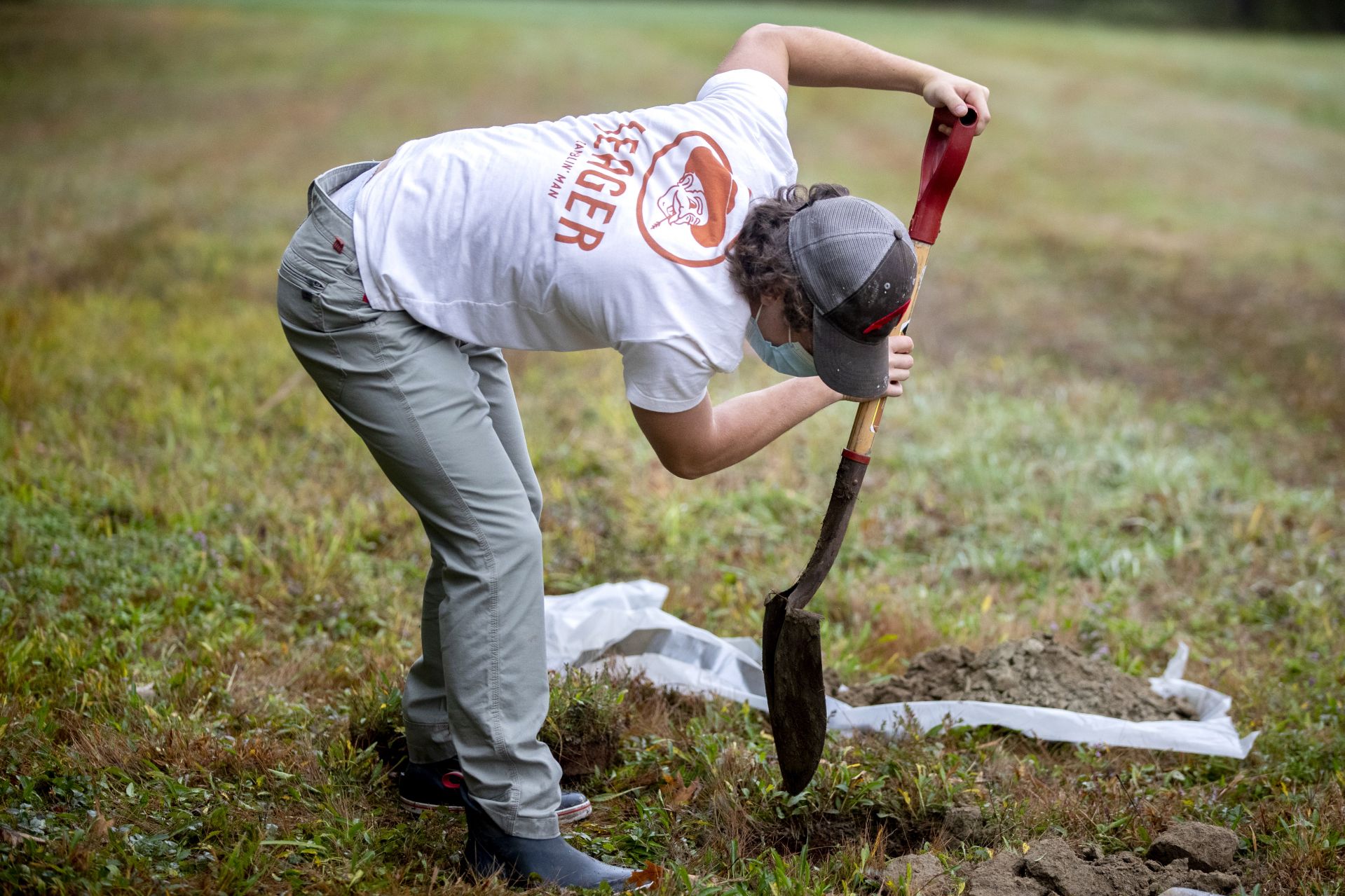
Guided by a Mentor
As the students spread across the old farmland in Freeport with their analysis assignment in hand, Ewing, joined by Camille Parrish, a lecturer in environmental studies, moved from one group to another to check in and give feedback.
Stopping to talk to Sophia Miller ’21 of New York City, Ewing used a knife to scrape off the face of the pit to expose a fresh surface for examination before departing to work with a group down at the river.
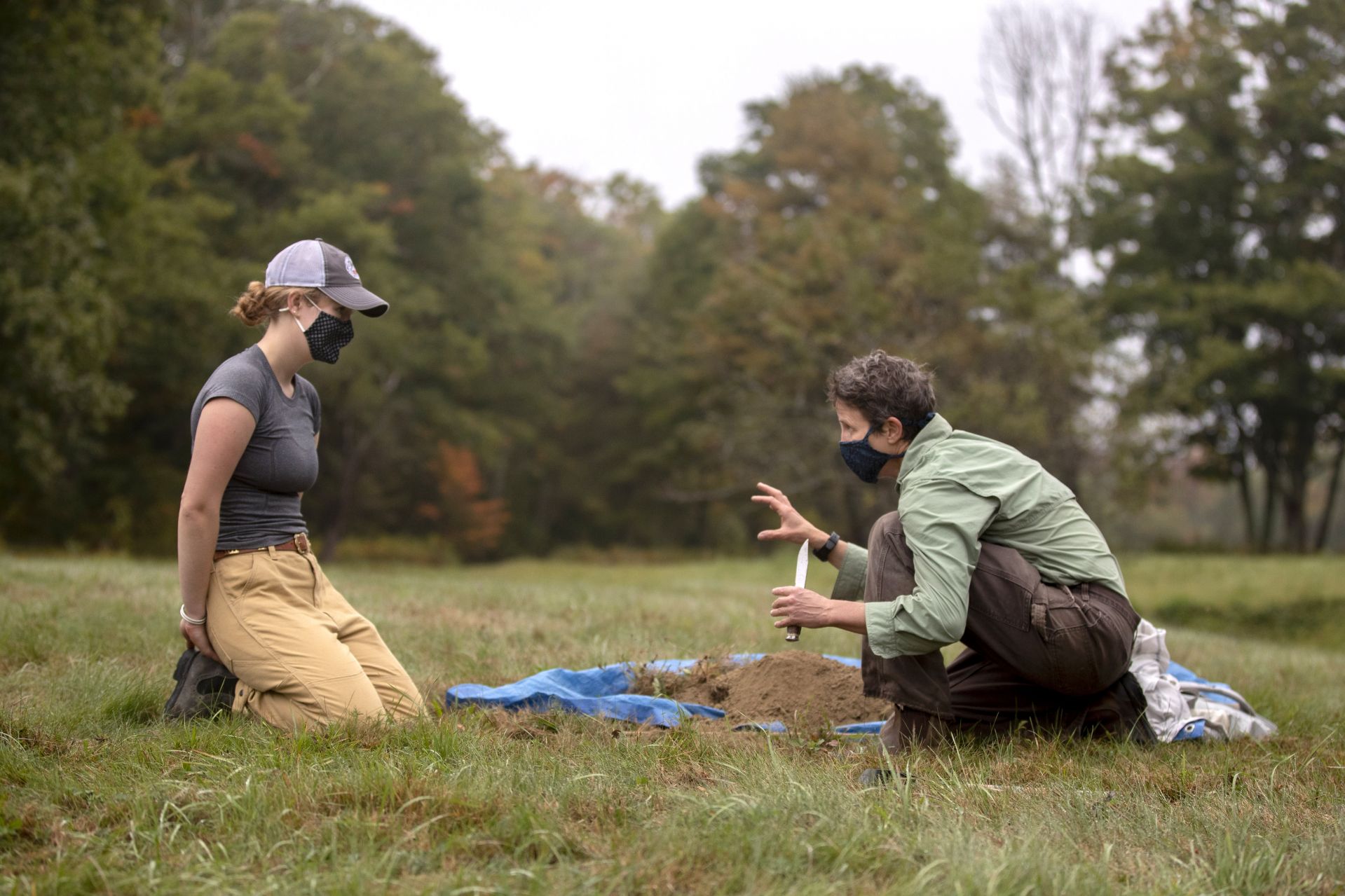
Ewing is Miller’s senior thesis advisor and the duo have been working together intensely this fall. Because of the unusual semester, students are taking just two courses for 7.5 weeks (Module A) and then will take two more during Module B, which concludes in December with winter break.
Miller’s two classes, the soils course and her thesis work, are both led by Ewing. “She’s my only professor at the moment,” Miller says. That’s an interesting dynamic, she says, but “it’s been pretty incredible to get to know a professor on that level.”
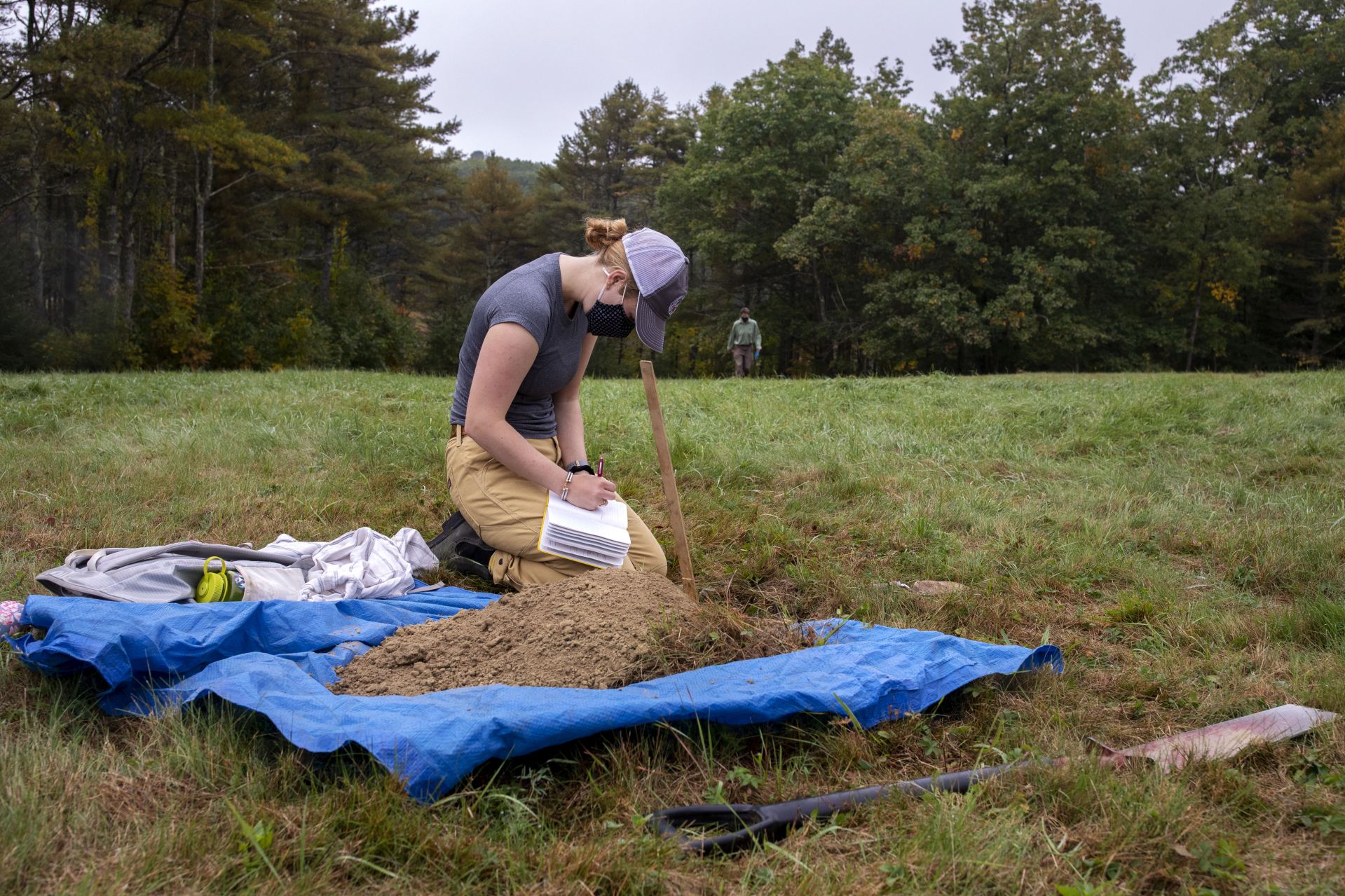
Further Afield
As Miller takes notes, she explains what she’s learned. This part of Pettingill was cultivated so the soil was often plowed up, mixing everything at the surface into one deeper horizon. Below that is clay, which might have been originally deposited when this area was covered by the ocean after the glaciers left. “There is a lot of clay that’s pretty hard to dig through because it’s so dense.”
No matter, says Miller. “Experiential learning has always been big for me,” she says. “That’s part of why I came to Bates.” And particularly welcome this fall, when she’s been spending so much time in her room.
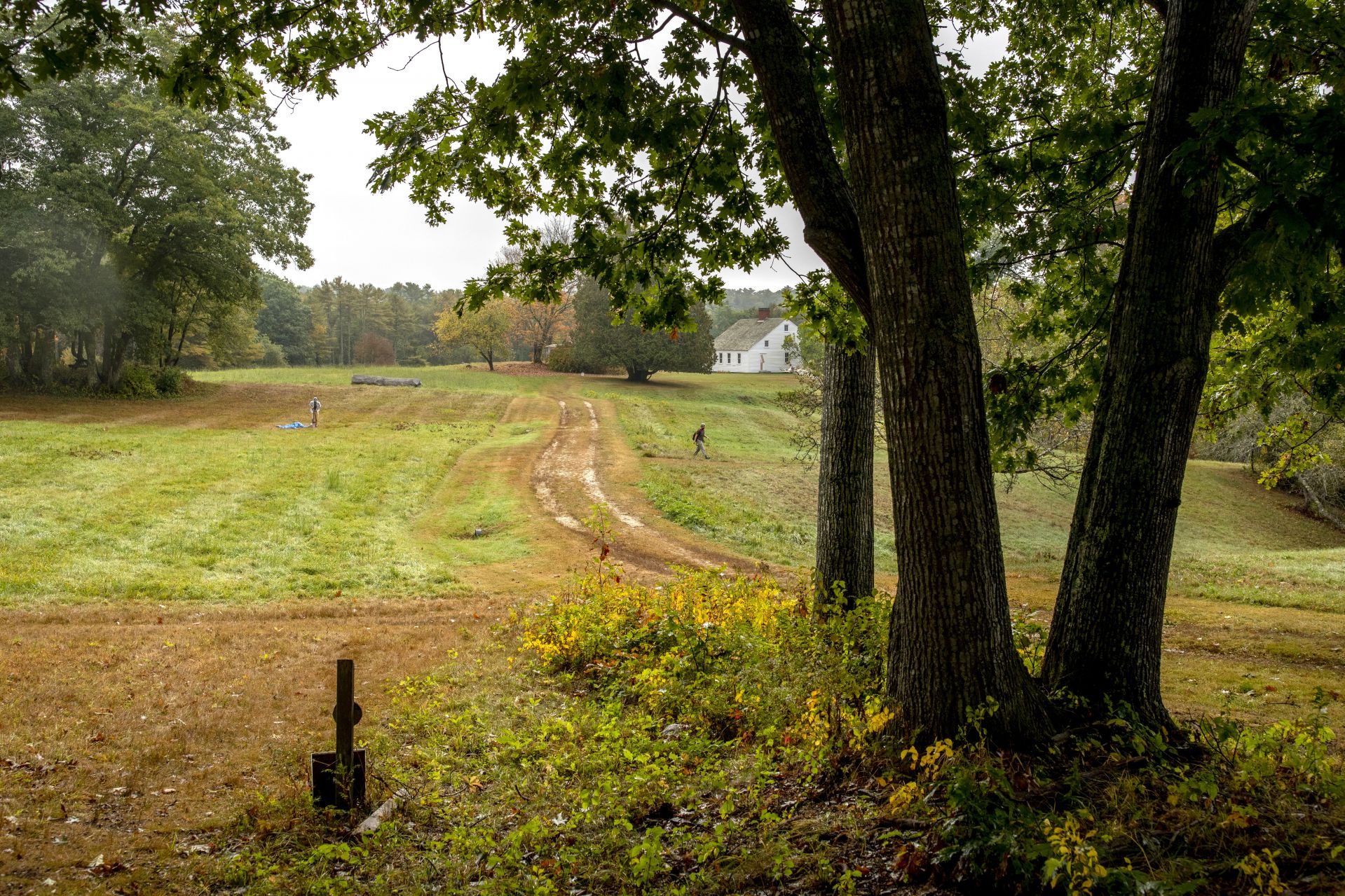
“I’m socially more isolated than I have been in past years,” she says. “So the opportunity to be around peers in a socially distant way, to get off campus, and be learning from Holly is especially special.”
This fall’s fieldwork, and its collaborative nature, helped solidify Zoe Knauss’ decision to declare her major in environmental studies. “It was super cool to be able to relate what we learn about in the classroom to the actual environment we are living in,” she says.

